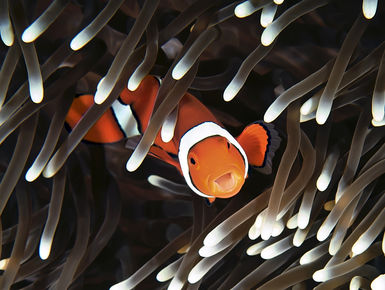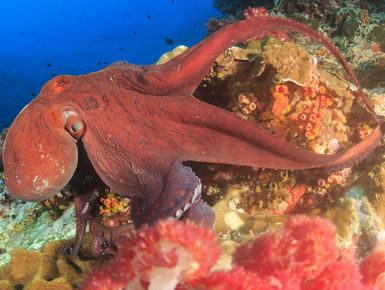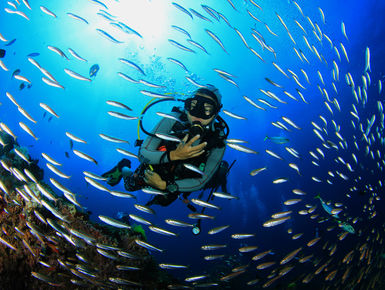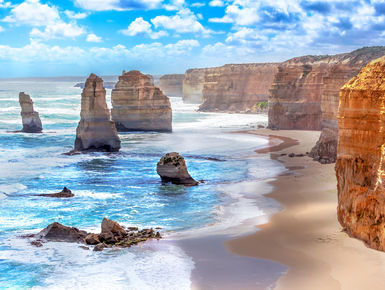
The Big Reef, and Beyond
There are reefs and there is THE REEF. Australia's Great Barrier Reef remains at the top of many a diver's bucket list, and with good reason. Named as one of the seven wonders of the natural world, it is the largest coral community on the planet and one of the ocean's most biologically diverse habitats. It's all here, from the tiny and the exotic to the largest fish in the sea. Explorations can begin at land-based resorts in Cairns or on Heron Island, while liveaboards give access to renowned sites on the Ribbon Reefs and the Coral Sea. Ashore, all the natural and cultural discoveries of the Land Down under await.
Highlights
- Best for: Intermediate to advanced divers, photographers and underwater naturalists
- Best season to visit: Year-round, May to October are most popular months for liveaboard trips, and June and July for minke whale encounters
- Weather: Cairns has hot, humid summers and cooler, dry winters. Temperatures typically drop a few degrees as you move offshore. Cyclone season runs from November to May
Things to Do
Australia Information
About Diving in Australia
All dives on the Great Barrier Reef will involve a boat ride. Day trips originating in Cairns and Port Douglas feature fast, spacious motor yachts and catamarans. Liveaboards provide the best access to many prime areas such as the Ribbon Reefs and Osprey Reef. A stay at Heron Island provides shorter boat rides combined with land-based accommodations. Conditions can range from calm and current-free on locations inside the reef to swells and surge when diving exposed sites. Depending on season and location, water temperatures range from 75 to 84 degrees.
Diving in Australia Tips
Months from September to February provide the calmest sea conditions, while the best visibility occurs in the cooler months from June to September. Summer algae blooms may reduce visibility to a degree, but also attract more marine life. The “shoulder season” months of April and November offer a combination of favorable sea states, good water and lesser numbers of divers.
Best Places to Dive in Australia
The internationally-known Cod Hole deserves a space on the bucket list. Equally memorable are the manta cleaning stations at Around the Bend, the migrating minke whales at Lighthouse Bommie, shark dives at North Horn, drift dive at False Entrance and the macro life at Split Bommie.
What to Pack for Diving in Australia
Skin suits to 3mm are ideal in summer, but some divers may need a 5mm in winter. Pack a waterproof cover-up for breezy surface intervals and an extra layer—vest or headgear—for longer liveaboard itineraries, as body core temperatures drop after days of diving. On liveaboards, there's no need to dress up for dinner, so pack light on topside clothing and use a soft bag that can be stowed easily in the cabin. Remember motion sickness meds if susceptible.
Resorts

Australia
Heron Island
Book on-line or Contact Caradonna Adventures at 800.328.2288 or email us sales@caradonna.com.
See Packages & Learn More
Liveaboards

Australia
Mike Ball Dive Expeditions Spoilsport
Call 800-330-6611 for Special Pricing and Information.
See Packages & Learn More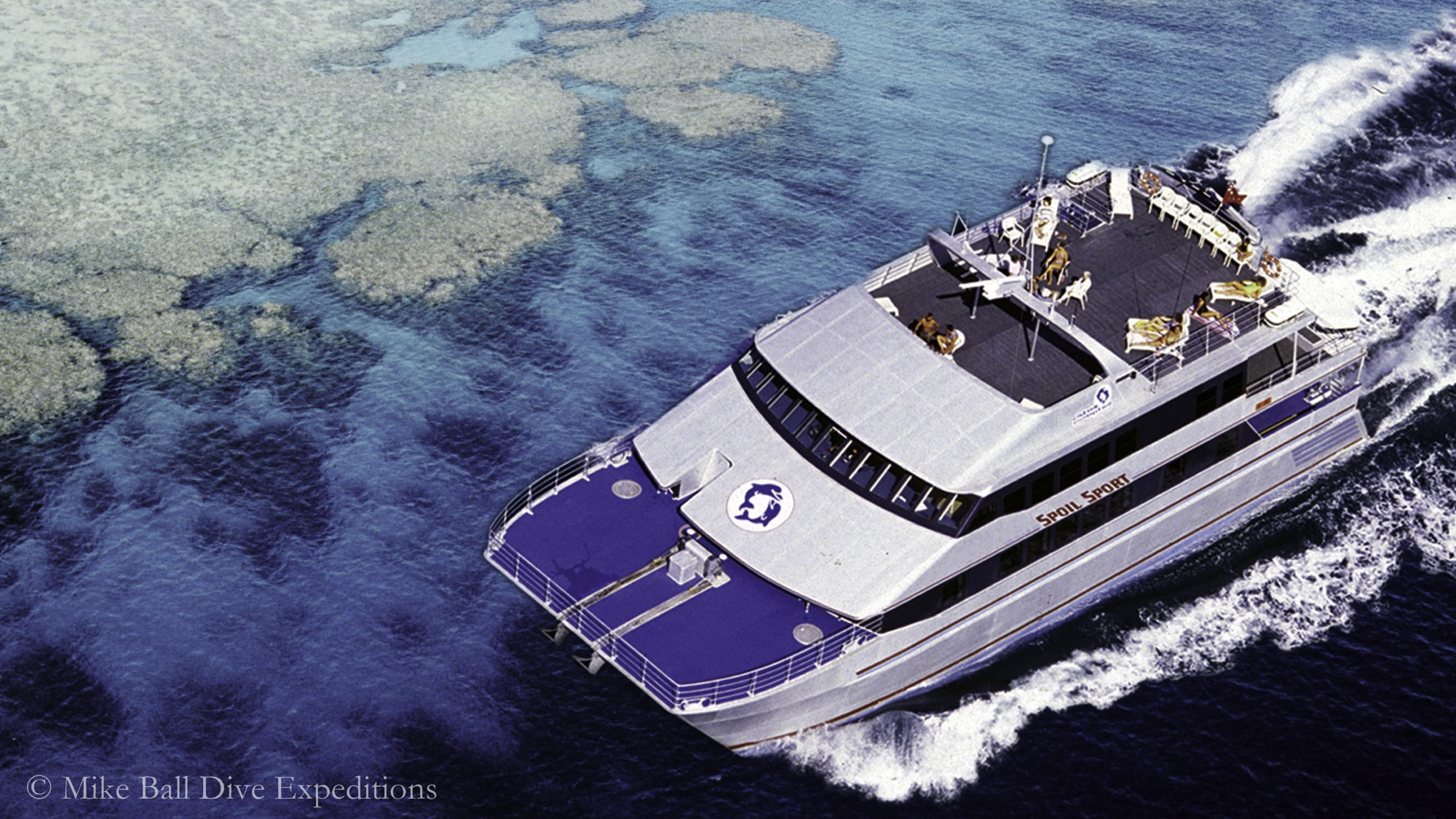
Australia
Mike Ball Dive Expeditions Spoilsport
Call 800-330-6611 for Special Pricing and Information.
See Packages & Learn More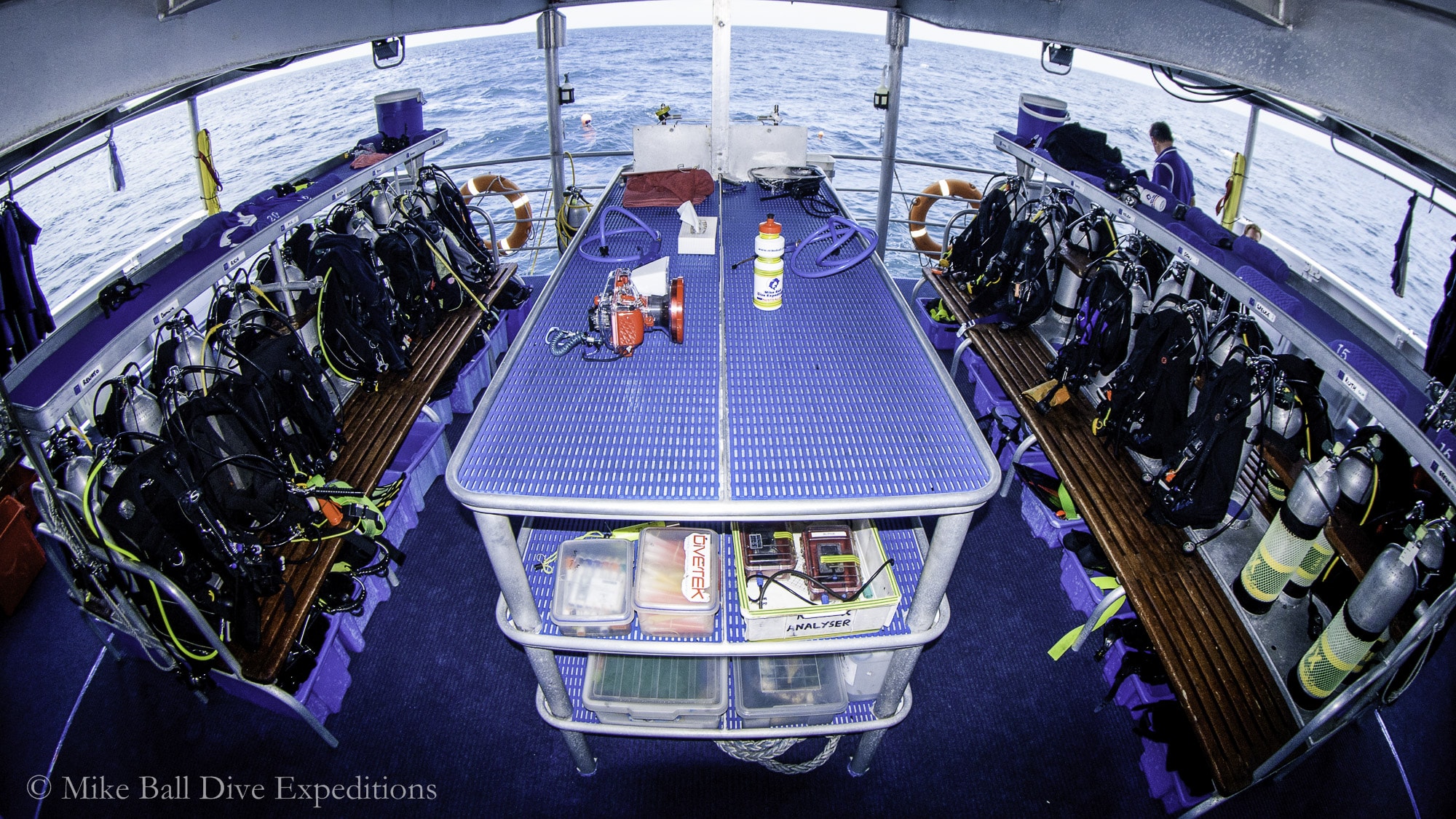
Australia
Mike Ball Dive Expeditions Spoilsport
Call 800-330-6611 for Special Pricing and Information.
See Packages & Learn More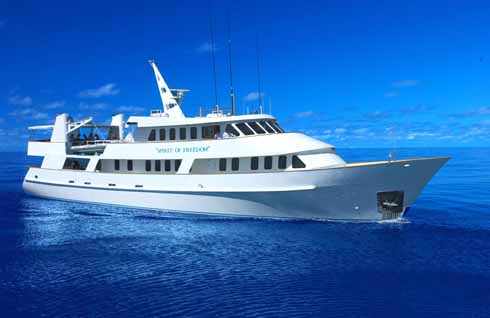
Australia
Spirit of Freedom
Contact Caradonna Adventures at 800.328.2288 for Pricing, Information and Availability.
Call 800-330-6611 for Special Pricing and Information.
See Packages & Learn MoreDiving in Australia
Some 1,200 miles in length and encompassing more than 13,000 square miles of ocean, the Great Barrier Reef Marine Park harbors an astounding variety of marine life, including more than1,600 species of fish, 600-plus types of coral, and more than 6,000 known varieties of invertebrates. Six of the world's seven species of sea turtle swim here, along with 30 species of whales and dolphins, giant black marlin and 133 species of sharks and rays. Diving activities take place all along the reef, with the northern areas generally considered the best sites. Some reefs are accessible by day trips from either Cairns or Port Douglas, but many of the best sites are reached only via a stay at offshore dive resorts such as Heron Island, or aboard a liveaboard dive vessel. A favorite liveaboard itinerary includes the Ribbon Reefs, where delicate soft corals grow to the size of a Christmas tree and starfish are electric blue. Big animal attractions include mantas, whales and sharks, and noteworthy finds include blue ring octopus, sawfish, ribbon eels, giant clams, harlequin tusk fish, wobbegong sharks and the giant potato cod. At the Cod Hole, groupers weighing up to 500 pounds interact with divers. Nearby Pixie Pinnacle has an incredible concentration of marine life for one small site - it’s all here - mantis shrimp, leafy scorpion fish, clownfish, lionfish, soft corals, giant fans, a proliferation of crinoids, nudibranchs and much more. Walls hold masses of chevron barracuda, dogtooth tunas and jacks swarm, with passing sharks always a possibility. In June and July, migrating dwarf minke whales pass through the Ribbon Reefs, giving divers a rare opportunity to view and interact with these fascinating marine mammals, A rare but not-to-be-forgotten sighting on outside reefs are the black marlin of up to 10 feet in length that will sometimes appear out of deep water. The reef continues north into the Coral Sea, offering some of the most exciting diving in the world. Spanning more than 1.5 million square miles of ocean, the Coral Sea contains hundreds of separate reefs, atolls, cays, and seamounts. This region is known for its vertical walls, enormous sea fans, multi-colored soft corals, sharks and amazing water clarity, which routinely exceeds 100 feet.
Passport and/or Visa Requirements
American citizens are required to have a valid U.S. passport to enter Australia with at least one blank page for the entry stamp. An Australian Visa is required, or if eligible, an electronic visa, through Electronic Travel Authority (ETA) at www.eta.immi.gov.au. The ETA replaces a visa and allows a stay of up to 90 days. The ETA may be obtained from their website for $20 AUD. Airlines and many travel agents in the United States are also able to apply for ETAs on behalf of travelers. Please note that American citizens who overstay their ETA or visa, even for short periods, may be subject to exclusion, detention, and removal.
Read about Australia's entry/exit requirements here.
Immunizations
There are no required immunizations for U.S. citizens to enter Australia, but we would always suggest checking with your doctor and the Centers for Disease Control on recommended vaccinations for travel to Australia at Traveler's Health CDC Australia.
Culture and Customs
For visitors from North America, Australia may seem like a favorite cousin who talks a bit funny and never met someone they didn't like. Portrayals of the Land Down Under often include a “no worries” attitude, which is an accurate representation of the hospitality visitors can expect. But laid back can be far from boring. In stark contrast to the cosmopolitan coastal cities to the south, Cairns is not only the gateway to the Great Barrier Reef but also the nation's epicenter for outdoor sports and adventures. Big game fishing charters, speedboat runs, jet ski tours and parasailing adventures take place in warm tropical waters, while on land, skydivers, climbers and bungee jumpers shun their fear of heights. Forays into the rainforest take place on foot, aboard motorcycles and mountain bikes or via offload vehicle. Aboriginal parks provide a glimpse of Australia's cultural heritage; zip line canopy rides spice up rainforest tours and crocodile-spotting cruises along the Daintree River provide bucket-list bragging rights.
Electricity, Phone and Internet Access
Standard electricity in Australia is 230 volts, 50 cycles. When coming from the United States an adapter will be needed for U.S. items and a step-down transformer could also be required to convert 220/240 Volt to 110/120 Volt. The power outlets use 3 flat pin plugs in a different configuration than U.S. sockets.
The international access code for Australia is 61. Please check with your cell phone provider for international data and calling plans.
Many hotels, restaurants and bars offer WiFi.
Water Quality
The tap water is safe to drink and bottled water is available for purchase.
Language & Currency
English is the official language of Australia.
The currency is the Australian Dollar (AUD) and consists of 5c, 10c, 20c, 50c, $1 and $2 as coins and notes are $5, $10, $20, $50, and $100. You can exchange funds at all international airports in Australia upon arrival or at any bank.
Major currencies can be exchanged at banks and many hotels, with some stores also accepting U.S. currency. Purchases may be made using cash or major credit cards. Check the current exchange rate here.
Time
Most of Australia uses 3 time zones.
Australian Eastern Standard Time (AEST): in New South Wales, Australian Capital Territory, Victoria, Tasmania and Queensland, which is 10 hours ahead of GMT (+10 GMT).
Australian Central Standard Time (ACST) in South Australia and Northern Territory, which is 9 1/2 hours ahead of Greenwich Mean Time (+9.5 GMT).
Australian Western Standard Time (AWST) in Western Australia, which is 8 hours ahead of Greenwich Mean Time (+8 GMT).
Daylight Saving Time is observed in New South Wales, the Australian Capital Territory, Victoria, South Australia and Tasmania from the beginning of October to the beginning of beginning of April, at which point AEST becomes AEDT and ACST becomes ACDT daylight savings time and moves by 1 hour. The Northern Territory, Western Australia and Queensland don’t observe Daylight Saving.
Location, Size and Population
Australia, sometimes referred to as the island continent, is the only country that is its own continent as well. Australia is very large - similar in size to the United States at almost 3 million square miles. The continent of Australia is located between the Indian Ocean and the South Pacific Ocean.
Australia's population is 24,17 Million (2016).
